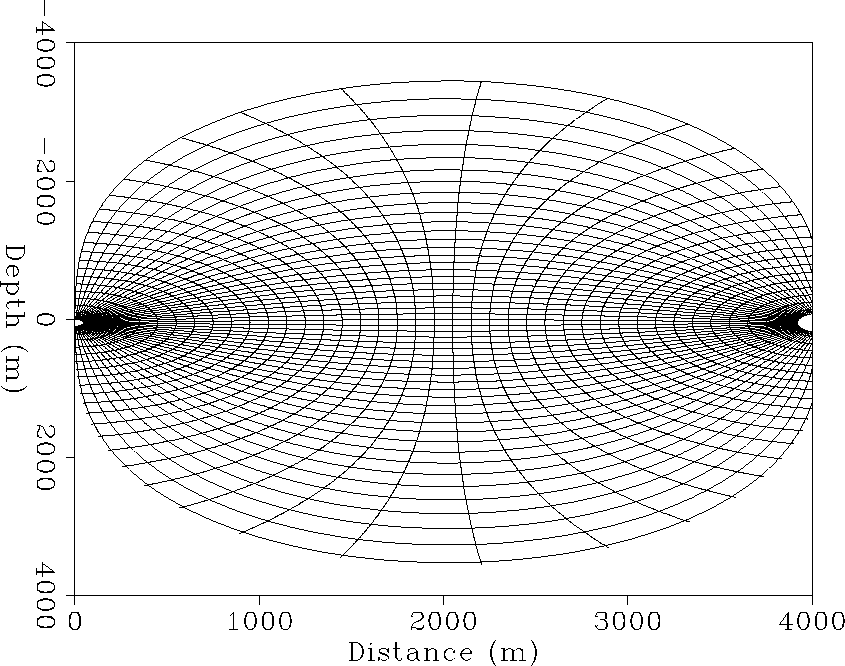| |
(14) |
A dipolar coordinate system can be derived from equation 14 by computing the equipotential surfaces and associated field lines. Figure 3 illustrates this for a dipole of 4 km spacing and a ![]() =1 ellipticity factor.
=1 ellipticity factor.
|
DipoleRays
Figure 3 The coordinate system used in the forward modeling tests derived from the potential field and field lines of an electrostatic dipole. |  |
The potential field distribution nearby the singularities becomes nearly radially symmetric and mimics the shape of a wavefield emerging from a point source in a homogeneous medium. For simplicity, I force the initial extrapolation surface to be a circular arc that directly matches the point source wavefield. Although this introduces a slight non-orthogonality into an otherwise orthogonal mesh, this is taken into account by the RWE theory Shragge (2006a). In addition, I have situated the source point 50m below the free-surface in order to simulate ghost reflections commonly found in marine data. The forward modeled wavefield, ![]() , is thus generated by extracting from the wavefield the values at the receiver locations on the center line paralleling the free surface at the source depth.
, is thus generated by extracting from the wavefield the values at the receiver locations on the center line paralleling the free surface at the source depth.